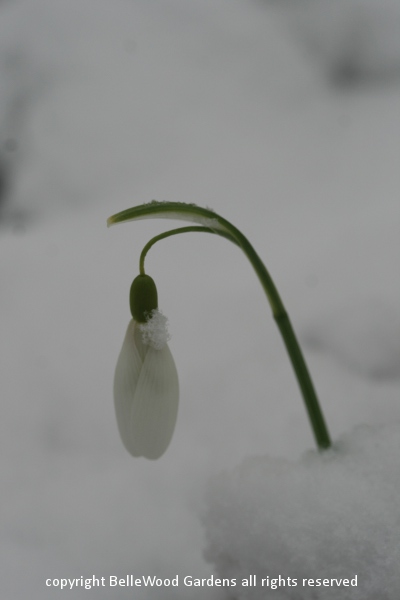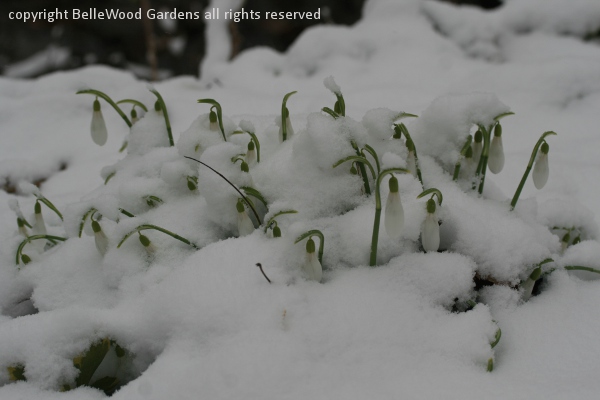
All content included on this site such as text, graphics and images is protected by U.S and international copyright law.
The compilation of all content on this site is the exclusive property of the site copyright holder.
Friday, 8 March 2013
Snowdrops

Galanthophile, a lover of snowdrops.
What is it about these dainty little flowers, white like the snow that is still an option in these weeks before Spring.
My brother, an anthropologist, says the more names given for an object, the greater its importance. In English this tiny white flower, one of the earliest to bloom, is most often named snowdrop. There are other traditional English names including fair maids of February and Candlemas bells. In parts of Yorkshire they're called snow piercers, much like the French name of perce-neige. Another French name is galantine d'hiver, while in Spanish it is called flor de nieve, snow flower.The German name is schneeglŲckchen, snow bells. Schneetropfen is sometimes used instead but I haven't a clue whether it is simply a translation of snowdrop, or, as is sometimes suggested, instead references a style of earring popular in the 16th and 17th centuries. And the Dutch name is sneeuwklokje. Sneeuw, schnee, neige, nieve - all mean snow.
You might come across niveole as a different French name for snowdrop, but it is meant for Spring snowflake, Leucojum vernum.
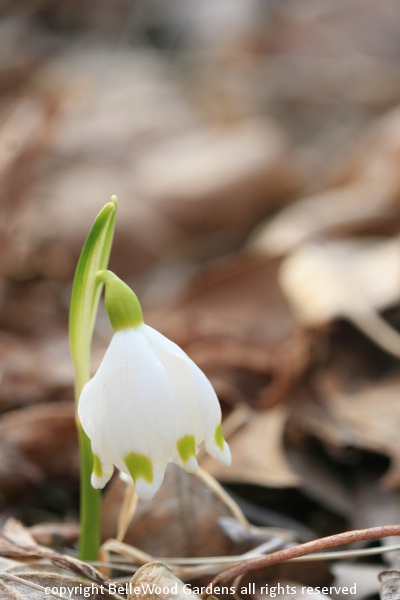
Did you ever read The Secret Garden by Frances Hodgson Burnett? Remember when Mary find her way into the garden and there are small green shoots emerging from the earth. She asks Martha, the housemaid what they might be. And the wonderful answer:
"They're bulbs," answered Martha. "Lots o' spring flowers grow from 'em. Th' very little ones are snowdrops an' crocuses an' th' big ones are narcissuses an' jonquils and daffydowndillys."
"Do bulbs live a long time? Would they live years and years if no one helped them?" inquired Mary anxiously.
"They're things as helps themselves," said Martha. "That's why poor folk can afford to have 'em. If you don't trouble 'em, most of 'em'll work away underground for a lifetime an' spread out an' have little 'uns. There's a place in th' park woods here where there's snowdrops by thousands. They're the prettiest sight in Yorkshire when th' spring comes. No one knows when they was first planted."
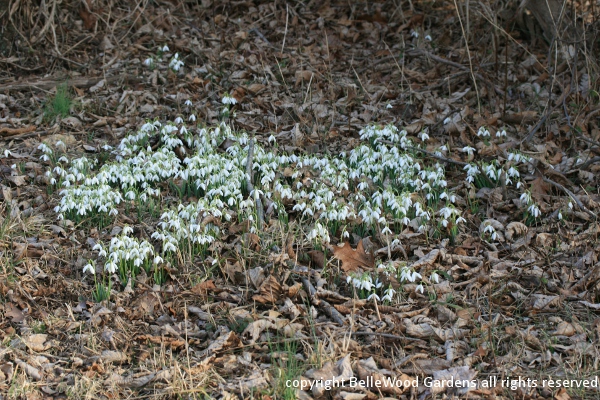
And that is all so very true. As I drive around at this time of year, here and there I find places where someone,
once upon a time, planted snowdrops. It's clear that they have been working away, spreading out, making more.
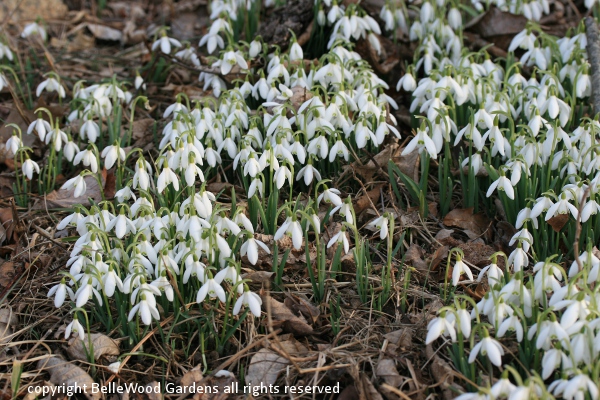
I wrote about a different roadside colony of snowdrops a couple of years ago here.
The "common" snowdrop is anything but. It blooms early, when cold weather can freeze the stems so solid that they snap
when picked, then thaw and revive when the weather moderates. Cherished in gardens, they appear in magnificent floras.
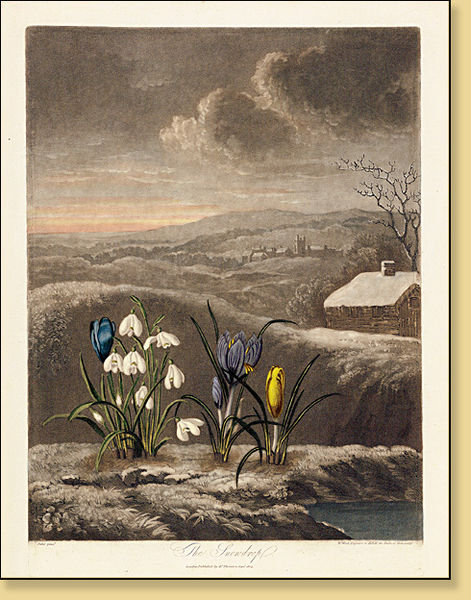
The Snowdrop, from The Temple of Flora
Published early in the 19th century, The Temple of Flora is the third and final part of Robert John Thornton's massive work. Thornton had decided to publish seventy folio-size plates. Consisting of a series of sumptuous illustrations of flowers displayed in epic and unusual settings, and accompanied by discourse on science, religion, politics, history, philosophy and mythology, and poetry, there was an unfortunate lack of interest from the general public that spelled disaster for the scheme, and the holding of a lottery could not save him from financial ruin.
Snowdrops are wonderfully sturdy little bulbs. They happily grow in light woodland shade, preferring a soil that does not become too dry, even in summer while they are dormant.
There are tiny differences that create great passion in the hearts of those besotted with them, some scarcely discernable to the rest of the gardening world.
A few of mine:

Galanthus nivalis 'Scharlockii' Easily distinguished by its two prominent 'ears' (the divided spathe)
and the green mark on the outer petals composed of three to five fused lines. It was discovered along the Nahe,
a tributary of the Rhine, by Herr Julius Scharlock in 1818 and was not named until 50 years later, in 1868.
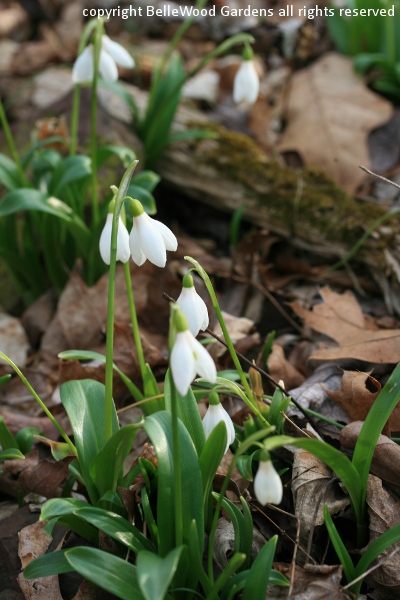
Galanthus woronowii has the same sweet snowdrop flowers with a single green marking at the sinus,
but easily distinguished by its shiny, bright green leaves. Some authorities like to lump it into G. ikariae.
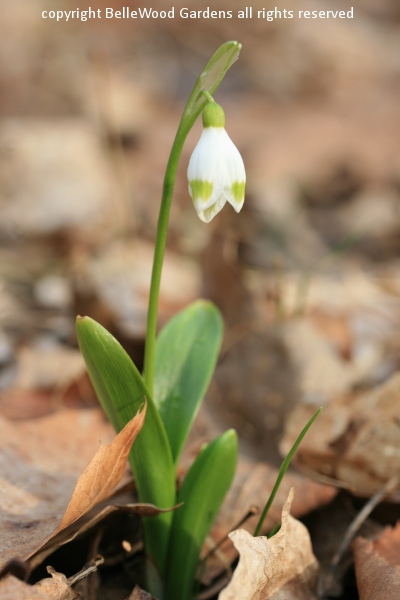
A Galanthus woronowii that appeared in the middle of a path, with strong green tips to its petals.
I'm sure there are named cultivars but since this popped up on its own it needs its own name. Suggestions?
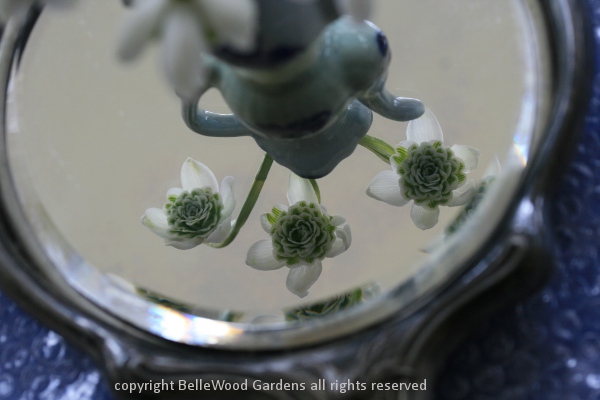
I had thought this neat and tidy double flowered snowdrop was one of the Greatorex double cultivars. But something niggled at me. Research lead me to Galanthus plicatus 'Hill PoŽ', found in a garden in Ireland in the early 1900s. Given a nice encomium by Aaron P. Davies in his book The Genus Galanthus: "A really good, neat G. plicatus double. Outer perianth segments 5, rarely less, and not misshapen. The inner rosette is very neat, made up of 18 to 24 inner perianth segments, which are roughly the same length and remarkably uniform in shape."

There is magic in the garden though it's blanketed with snow.
The fairies dance in moonlight as the winter season goes.
